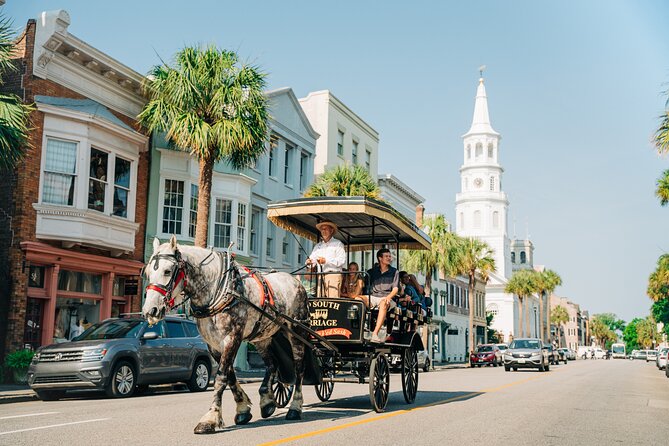Charleston Trip Overview
This tour is an exploration of Charleston’s 350 year old African community. Our experience starts at the Philip Simmons House where one of the greatest African-American artists of the 20th century created a lifetime of beauty. Led by museum docents, witness the humble life of a great Charleston artisan.
We continue our experience by walking down America Street, the center of Charleston’s African-American community. Along the way, learn about and witness the trials and tribulations of the past and present.
We stop briefly at the edge of the African-American community to give a powerful visualization of class division that still exists in the city today.
Finally, we walk to Mother Emanuel AME Church. Learn about how free people of color came together to form flourishing communities and houses of worship. Learn how the Emanuel 9 Shooting brought the entire world together in the fight against racism.
Additional Info
Duration: 2 hours
Starts: Charleston, United States
Trip Category: Cultural & Theme Tours >> Cultural Tours
Explore Charleston Promoted Experiences
What to Expect When Visiting Charleston, South Carolina, United States
This tour is an exploration of Charleston’s 350 year old African community. Our experience starts at the Philip Simmons House where one of the greatest African-American artists of the 20th century created a lifetime of beauty. Led by museum docents, witness the humble life of a great Charleston artisan.
We continue our experience by walking down America Street, the center of Charleston’s African-American community. Along the way, learn about and witness the trials and tribulations of the past and present.
We stop briefly at the edge of the African-American community to give a powerful visualization of class division that still exists in the city today.
Finally, we walk to Mother Emanuel AME Church. Learn about how free people of color came together to form flourishing communities and houses of worship. Learn how the Emanuel 9 Shooting brought the entire world together in the fight against racism.
Itinerary
This is a typical itinerary for this product
Stop At: Philip Simmons Museum Home and Workshop, 30 1/2 Blake St, Charleston, SC 29403-5044
We will start our exploration of Charleston’s 300 year old African community at the Philip Simmons Museum where one of the greatest African American artist of the 20th century created a lifetime of beauty. Led by the museum docents, we will witness the humble life of a great artisan.
Duration: 30 minutes
Pass By: Aiken-Rhett House, 48 Elizabeth St, Charleston, SC 29403-6250
Built in 1820 by merchant John Robinson, the Aiken-Rhett House is nationally significant as one of the best-preserved townhouse complexes in the nation. Vastly expanded by Governor and Mrs. William Aiken, Jr. in the 1830s and again in the 1850s, the house and its outbuildings include a kitchen, the original slave quarters, carriage block and back lot. The house and its surviving furnishings offer a compelling portrait of urban life in antebellum Charleston, as well as a Southern politician, slaveholder and industrialist. The house spent 142 years in the Aiken family’s hands before being sold to the Charleston Museum and opened as a museum house in 1975.
Pass By: Mother Emanuel AME Church, 110 Calhoun St, Charleston, SC 29401, USA
The church was founded as the Hampstead Church on Reid and Hanover streets. Hampstead Church was part of the “Bethel circuit” of the African Methodist Episcopal Church, the first independent black denomination in the United States, founded in Philadelphia, Pennsylvania in 1816 by Richard Allen. They created an independent congregation because of a dispute over use of the black burial ground. The white-dominated churches had increasingly discriminated against blacks in Charleston, culminating in Bethel Methodist’s construction of a hearse house over its black burial ground. In 1818, church leader Morris Brown left a white Methodist church in protest, and more than 4,000 Black members of the city’s three Methodist churches followed him to create this new church.






